Grading Currency
Learning how to accurately grade currency is a skill that is learned over time after handling many notes. However, hopefully the information below will act as a crash course to understand the basics of what makes a note nicer than another.
Currency is graded on a scale of 1-70, with 70 being absolute perfection and 1 being completely terrible. However, more commonly in the collecting world, currency is referred to by a set of descriptive names. Ranging from worst condition to best, they are:
Poor – Good – Very Good – Fine – Very Fine – Extremely Fine – About Uncirculated – Choice Uncirculated – Gem Uncirculated
Good – (4)

Usual Characteristics: serious problems – very dirty – missing corners – splitting margins, tears
Typically, good notes are collected only as a second thought, usually by people who just fancy having “some old paper money.” Good notes were usually picked out of circulation after many years. They are readily available on ebay and you won’t need a second mortgage to get a full type set together. Good notes are great if you are trying to get a child in the hobby or if you want to collect as cheap as possible.
Very Good – (8-10)
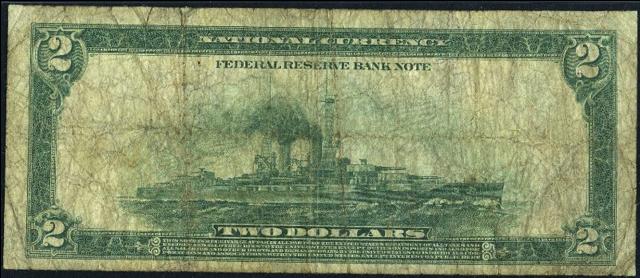
Usual Characteristics: minor tears, no body, very well worn, not much eye appeal
A very good note will have more wear and less eye appeal than a fine note, but it will lack a significant flaw that good notes will have. Generally speaking, a very good note will be dirty but not totally trashed. For common very good notes there will not be a big price difference from the 8-15 range, so it would be advised to buy the one that has the most eye appeal over the one that may have the higher technical grade.
Fine – (12-15)
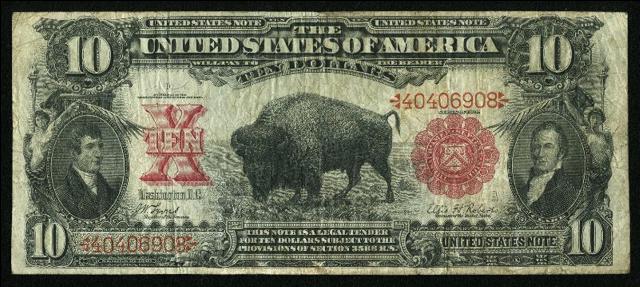
Usual Characteristics: little crispiness, somewhat leathered look, numerous folds, faded colors
A note in fine grade generally has the appearance as if has been balled up and worn in a gym sock for a week and then straightened back out. A fine note will have no crispiness and a leathered look. Expect beat up corners and faded colors in this grade. One positive thing about a fine note is that you generally know what you are getting into, even based on a scan.
Very Fine – (20-25)
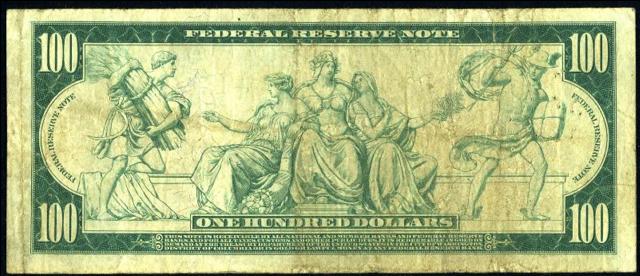
Usual Characteristics: multiple folds, above average wear, used but fully intact
When looking at a note you think may be a low grade very fine, be sure to look for repairs and tears that may not be obvious on just a casual look. A low grade very fine note will tend to pancake when held in hand, the original crispiness just will not be there. When seeking rarity you may have to settle for a low grade very fine note. The average note pulled from circulation would likely grade a 20 or 25.
Very Fine – (30-35)
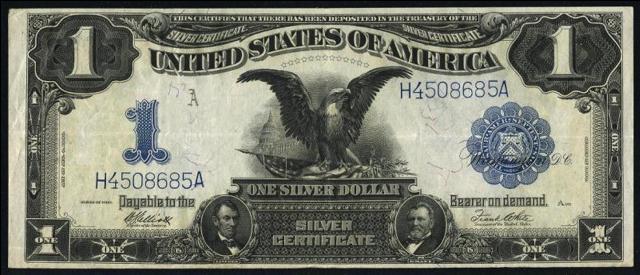
Usual Characteristics: a few of folds, lightly circulated, maybe a smudge or rough handling, fairly crisp paper
High grade very fine notes can be a great way to get an attractive original note for a fraction of the price of their uncirculated cousins. Buyer beware though, very fine notes are often subject to washing to increase their eye appeal. If you hold a raw very fine note if should feel strong and thick. It will have noticeable folds but it should be very presentable otherwise.
High grade very fine notes can be a great way to get an attractive original note for a fraction of the price of their uncirculated cousins. Buyer beware though, very fine notes are often subject to washing to increase their eye appeal. If you hold a raw very fine note if should feel strong and thick. It will have noticeable folds but it should be very presentable otherwise.
Extremely Fine – (40-45)
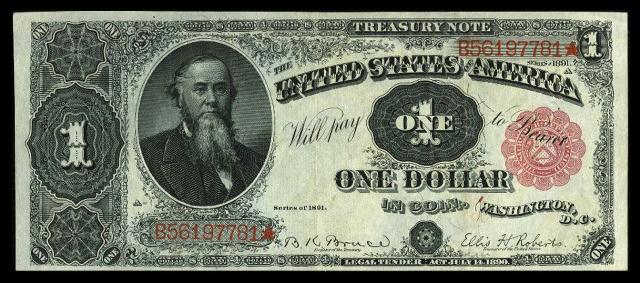
Usual Characteristics: 2 or 3 vertical folds, very lightly circulated, very visually pleasing, no discoloration
Extremely fine notes will likely have seen very little to no actual circulation. Your standard XF note will have 3 vertical folds, usually from poor storage, or several bends it may have picked up over time. Extremely fine notes should have good color and paper quality. Often times XF notes can be made to look much better by pressing or doctoring, however, those practices are always discouraged.
About Uncirculated (50-58)
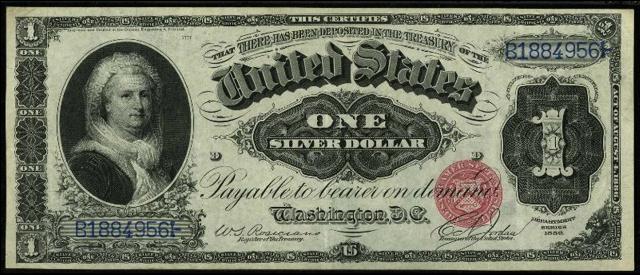
Usual Characteristics: at most two light folds, corner folds, rough handling, minor noticeable flaw
About uncirculated notes run the gamut from two very light folds on the low end, to a flaw so minor that it may barely be noticeable on the high end. In reality AU notes will likely not have seen any real time in circulation. Most flaws will be from poor storage or handling over many years. An AU note should be all about eye appeal. One can generally enjoy a full bodied AU even margined note for less than half the cost of its gem counterpart.
Choice Uncirculated – (64-65)
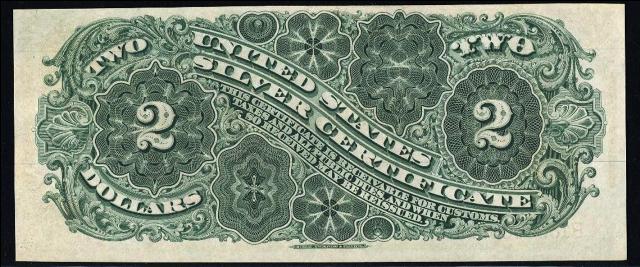
Usual Characteristics: no folds, less than perfect centering, counting mark or smudge, corner tip fold
Choice uncirculated notes will have no folds that run into the design. They may possess a small corner tip fold. For an otherwise perfect note to get a 63 or 64 it will have centering problems, meaning the margins are lopsided. A choice uncirculated note could also suffer from counting marks, smudges, or rough handling, all of which are explained below.
Gem Uncirculated – (65-70)
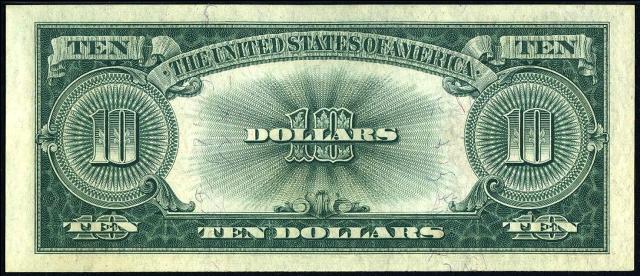
Usual Characteristics: no flaws or folds, excellent to perfect centering, strong embossing and thick paper
Gem notes are the royalty of currency collecting. They are not often encountered in grades 67 and up, and such notes command very strong prices. Gem notes should be clean with no distractions or folds. The centering should be within 75% of perfect. The colors and paper quality should be flawless. Unlike coins, a lot of currency is not even printed with the chance of becoming a gem.
Examples and Terms
Handling – Handling is a generic term that can refer to counting marks, pinches or smudges
Counting Marks – very light bends going into the note that aren’t folds.
Pinches – are similar to counting marks but they occur internally on the note
Smudges – are the result of skin contact to ink surfaces
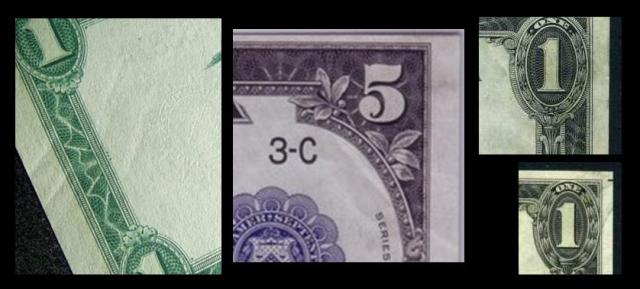
Grades: left note-64, center note-65, top right-64, bottom right-65 (as graded by PMG or PCGS)
The note on the far left has counting marks. The center and top right note have pinches and smudges. The bottom right note has a smudge.
Originality – means the paper has not been pressed or washed and embossing and paper wave should be present
Embossing – is when the note’s printing can be felt on the other side of the note, this should be especially present around the serial numbers and treasury seal
Paper Wave – refers to the light ripples that should go across the top and bottom of a note, this is a result of wet paper drying after the printing process
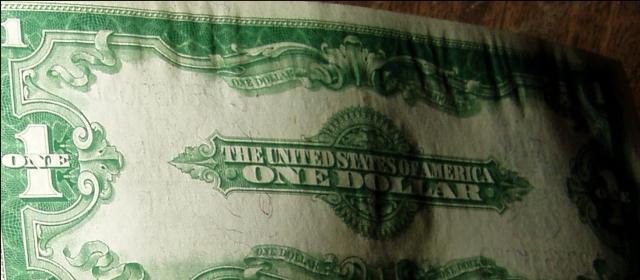
The note above may look folded, but it is actually the way a crisp new note should look. The wrinkles are paper waves. You can even see the seal and serial number embossing coming through. This note graded as a 67.

